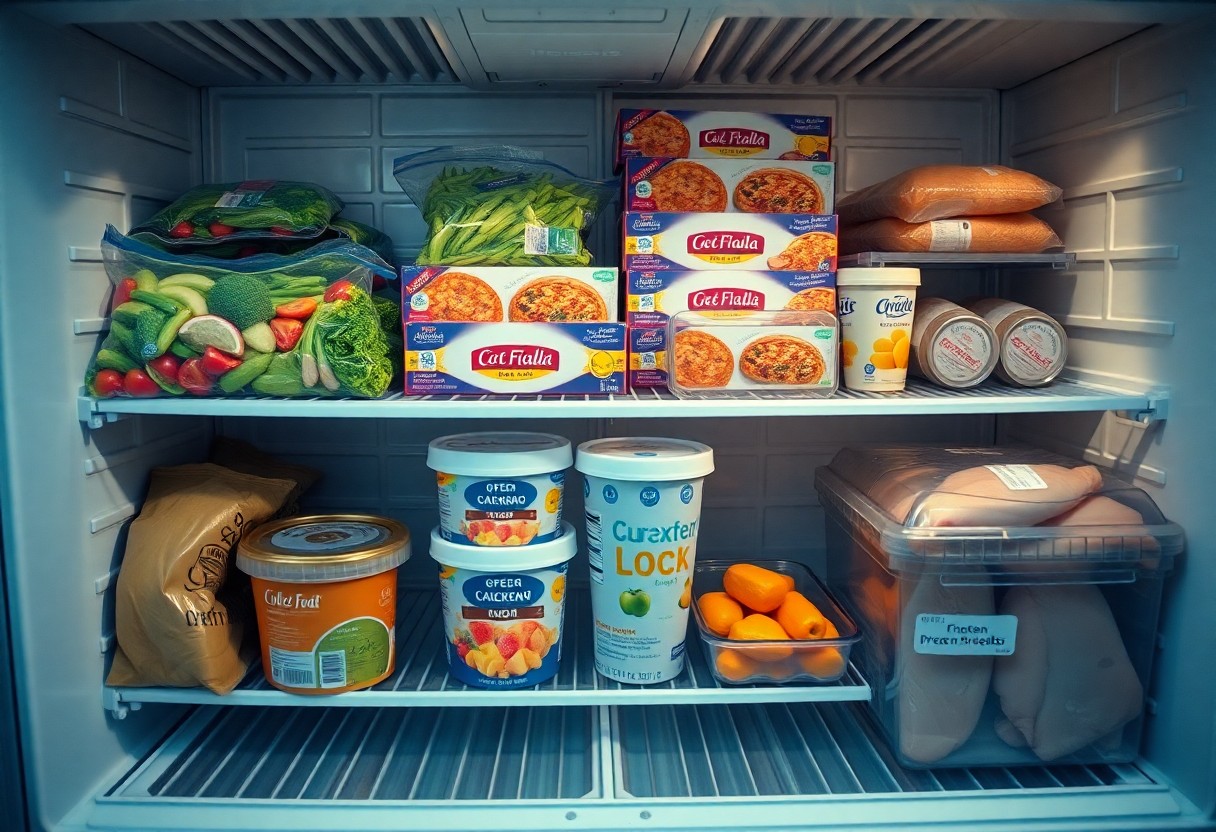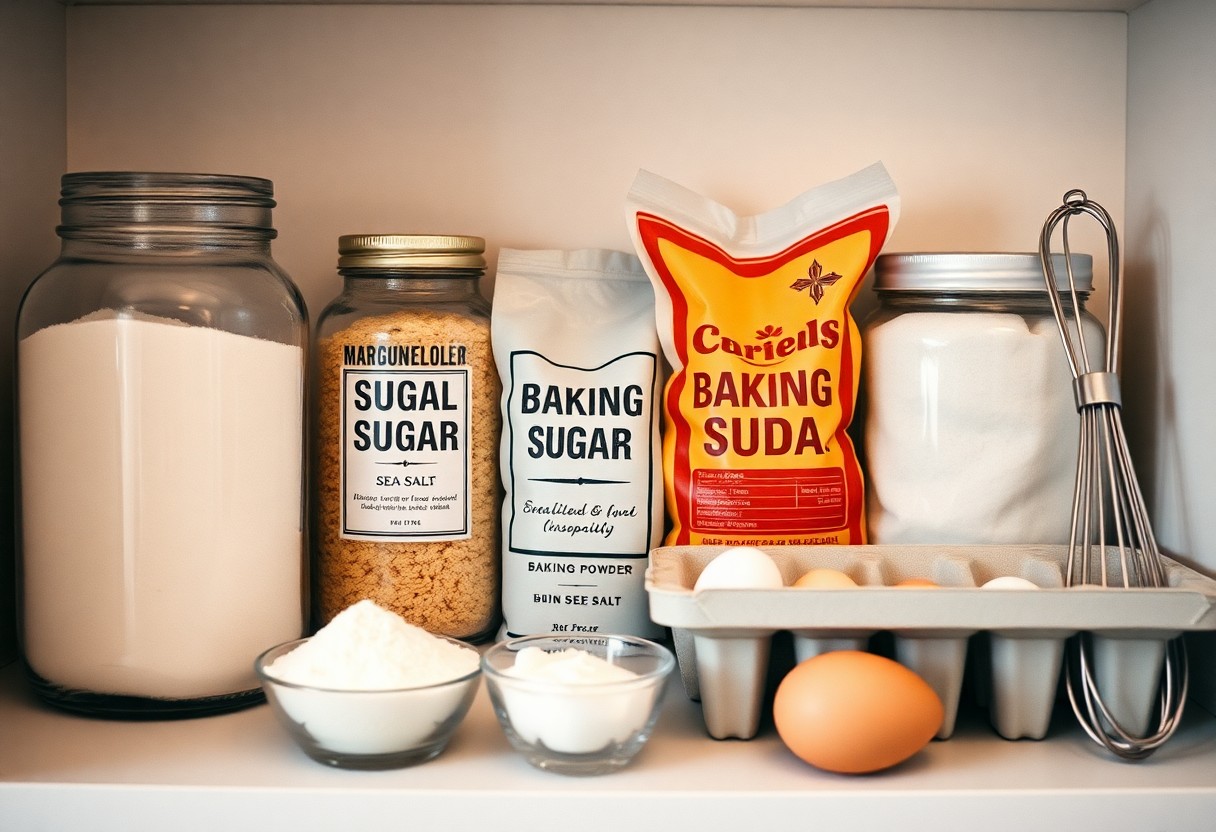It’s imperative for you to stock your pantry with versatile grocery staples that make meal preparation quick and healthy. These foundational ingredients not only enhance your cooking but also ensure that you’re always ready to whip up nutritious meals. From grains and legumes to spices and condiments, having the right items on hand will save you time and enable you to create delicious dishes whenever inspiration strikes. With this guide, you can curate a pantry that meets your culinary needs and supports a balanced lifestyle.
Grains and Pasta
Including a variety of grains and pasta in your pantry enhances your meal options while contributing to a well-balanced diet. These staples provide necessary carbohydrates, fiber, and nutrients, making them a great foundation for countless dishes. Stocking up on grains and pasta can also aid in crafting quick, nutritious meals that satisfy hunger without excessive effort.
Rice
Rice serves as a versatile base for many meals, from stir-fries to casseroles. Options like brown, jasmine, and basmati rice provide different flavors and textures, allowing you to match them with different cuisines. Brown rice, for instance, is a whole grain that offers higher fiber content, promoting digestive health and keeping you fuller longer.
Quinoa
Quinoa stands out as a complete protein, containing all nine necessary amino acids. This gluten-free grain is rich in fiber, magnesium, and antioxidants, making it a smart choice for your health. Use it as a salad base or as a side dish to elevate any meal.
Incorporating quinoa into your meals adds protein and a distinct, nutty flavor. This grain cooks quickly, taking about 15 minutes, and can easily absorb flavors from spices or dressings. With a fluffy texture, quinoa complements various dishes, whether you’re creating grain bowls, adding it to soups, or mixing it into baked goods for extra nutrition.
Whole Wheat Pasta
Whole wheat pasta is an excellent alternative to traditional pasta, offering more fiber and nutrients. By switching to whole wheat, you enhance the nutritional profile of your dishes, helping to stabilize blood sugar levels and support digestive health. This makes it a hearty option for salads, casseroles, and classic Italian dishes.
Whole wheat pasta contains approximately 3-4 grams of fiber per serving, compared to only a gram found in regular pasta, significantly contributing to your daily intake. Its robust flavor and chewy texture make it an ideal partner for roasted vegetables, lean proteins, and flavorful sauces. Using whole wheat pasta ensures your meals are satisfying without compromising on health benefits.
Canned and Jarred Goods
Stocking canned and jarred goods provides a convenient way to incorporate nutrients into your meals without the pressure of spoilage. Items like beans, tomatoes, and sauces serve as versatile bases for countless dishes, from quick soups to hearty stews. They are not only shelf-stable but often come pre-cooked or peeled, which saves time during meal prep. Choosing quality brands ensures you’ll have the best flavors and nutrients available, making these items indispensable for quick, healthy meals.
Canned Beans
Canned beans are a fantastic source of protein and fiber, making them perfect for plant-based meals. Varieties like black beans, chickpeas, and kidney beans can easily enhance salads, soups, or even tacos. Their versatility makes them an necessary pantry staple, offering a quick way to boost nutrition and add texture to dishes without extensive cooking.
Tomatoes and Sauces
Tomatoes and sauces are foundational elements in many kitchens, providing flavor and acidity that can transform a dish. Canned whole tomatoes, diced tomatoes, and tomato paste are all worth having on hand, as they serve as excellent bases for sauces, soups, and casseroles. Their long shelf life and the intensity of flavor mean you can create delicious meals any night of the week.
Using canned tomatoes can elevate your cooking effortlessly. For instance, a can of diced tomatoes can transform ordinary pasta into a rich marinara sauce, while whole tomatoes can be pureed for a smooth soup or used in stews. Typically, you’re looking at highly concentrated flavors and necessary nutrients, such as vitamin C and potassium, which makes them indispensable for quick and healthy meal preparation. Opting for low-sodium versions allows you to control ingredients while enjoying the convenience of ready-to-use products.

Frozen Foods
Stocking your freezer with an assortment of frozen foods can make meal preparation quick and effortless without sacrificing nutrition. Frozen items maintain their nutrients effectively, ensuring you have healthy options available even when fresh produce isn’t on hand. This allows for versatile meal options, making it easy to whip up a wholesome dinner or snack at a moment’s notice.
Vegetables
Frozen vegetables are a convenient addition to your meals, preserving freshness and taste while saving prep time. Options like broccoli, spinach, and mixed stir-fry blends are typically harvested at peak ripeness, ensuring you get a rich supply of vitamins. Adding these to soups, casseroles, or stir-fries makes it easy to enhance your nutrition.
Fruits
Frozen fruits such as berries, mangoes, and bananas are perfect for smoothies, desserts, or as toppings. Packed with antioxidants, these fruits retain their natural flavors and sweetness, offering a quick way to add vitamins to your diet. They can also serve as a substitute for fresh fruit in various recipes, making it easier to enjoy healthy treats year-round.
Incorporating frozen fruits into your meals not only boosts flavor but also nutrition. You can blend frozen berries into smoothies for a refreshing breakfast or use them in oatmeal for added sweetness. Additionally, frozen fruits can be used in baking, allowing you to whip up muffins or pancakes without worrying about spoilage. Their long shelf-life means you can enjoy seasonal varieties any time of the year.
Protein Options
Frozen protein options, including fish, chicken, and plant-based products like tofu and beans, offer flexibility in meal planning. Keeping these on hand allows for a high-quality protein source, necessary for maintaining muscle mass and overall health. They can be quickly defrosted and incorporated into various dishes, making meal prep more efficient.
Utilizing frozen protein options ensures that you always have a nutritious centerpiece for your meals. For instance, frozen salmon can be easily baked or grilled, providing omega-3 fatty acids necessary for heart health. Additionally, frozen chicken breasts can be used in stir-fries or casseroles, allowing you to create balanced dinners in a matter of minutes. The storage convenience of frozen proteins ensures you stay on track with your health goals without compromising on time or quality.

Baking Essentials
Baking requires a few key ingredients to ensure that your creations are delicious and successful. Stocking up on these importants means you can whip up everything from cookies to bread at a moment’s notice. Understanding how each ingredient contributes to the baking process will elevate your skills and give you confidence in the kitchen.
Flour
Flour serves as the foundation for most baked goods, providing structure and texture. All-purpose flour is a versatile choice, while bread flour offers more protein for yeast-based recipes. Keeping whole wheat flour on hand adds nutritional value, contributing fiber and a nutty flavor to your baked creations.
Sugar
Sugar not only sweetens your baked goods but also improves texture and browning. Granulated sugar is important for most recipes, while brown sugar adds a rich moisture and caramel flavor—a great choice for cookies and cakes. Having powdered sugar is beneficial for frostings and glazes, allowing for a silky smooth finish. The sweetness level can significantly affect the outcome, so measuring accurately is key.
Baking Powder and Soda
Baking powder and baking soda act as leavening agents, helping your baked goods rise and achieve a light texture. They release gases when combined with moisture or acid, creating lift. Knowing the difference is vital; baking soda requires an acidic ingredient, whereas baking powder has its own acid included for use in recipes.
Baking powder often comes in two varieties: single-acting and double-acting. Double-acting baking powder provides a rise during mixing and baking, making it more versatile for various recipes. Baking soda, being stronger and requiring an acid to activate, is ideal for cookies and certain cakes. Always ensure these ingredients are fresh, as old leaveners can lead to dense or flat baked goods.

Condiments and Spices
Condiments and spices enhance the flavor of your meals, transforming simple dishes into culinary experiences. Stocking your pantry with a variety of these imperatives will not only add depth to your cooking but also save you time during meal prep. A wise selection includes Essential Pantry Staples to Keep in Your Kitchen that can elevate any recipe.
Olive Oil and Vinegar
Quality olive oil serves as a foundation for dressings, marinades, and sautéing, while vinegar adds necessary acidity to balance flavors. A mix of extra virgin olive oil and various vinegars, such as balsamic and red wine, empowers you to create versatile dressings and sauces, enhancing the taste of your everyday dishes.
Salt and Pepper
Salt and pepper are the cornerstone of seasoning, allowing you to bring out the natural flavors of your ingredients. While kosher salt is great for most cooking applications, sea salt can add a pleasant crunch to finished dishes. Freshly ground black pepper elevates flavor profiles, making your meals more aromatic.
Invest in a strong, coarse kosher salt for cooking and a fine sea salt for finishing. The balance of salt enhances sweetness, reduces bitterness, and amplifies flavors without overpowering them. Freshly ground black pepper not only adds heat but also complexity to dishes, making it a must-have in your kitchen. Experiment with specialty salts like smoked or flavored varieties to add an extra dimension to your culinary creations.
Dried Herbs and Spices
Your collection of dried herbs and spices can transform simple meals into flavorful experiences. By storing staples like oregano, basil, and cumin, you give yourself the flexibility to create diverse dishes from various cuisines, enhancing your meals without excessive effort.
Consider investing in dried herbs such as thyme, rosemary, and parsley, which can infuse your meals with aromatic flavors. Spices like cinnamon, cumin, and paprika not only add warmth but also a layer of complexity. Ensure they are kept in airtight containers and stored away from sunlight to maintain their potency. Regularly check expiration dates to keep your cooking vibrant and flavorful.
Proteins and Dairy
Fulfilling your protein and dairy needs is necessary for a balanced diet. Stocking your fridge with versatile options like eggs, nut butters, and shelf-stable milk can enhance your meal preparation. For more suggestions on must-have grocery items, check Your Go-To Grocery List: 20 Super Staples for Every Pantry.
Eggs
Eggs offer a high-quality protein source and are incredibly versatile. You can enjoy them boiled, scrambled, or poached, making them perfect for breakfast or dinner. Beyond their culinary uses, they also boast a wealth of nutrients, including vitamin D and choline.
Nut Butters
Nut butters, such as peanut or almond butter, provide a satisfying protein boost and healthy fats while being easy to incorporate into various recipes. They serve as a delicious spread on toast, an ingredient in smoothies, or a dip for fruits.
Nut butters not only fuel you with energy but also offer benefits like heart health and weight management. Packed with protein, just two tablespoons typically provide around 7-8 grams of protein and 2-3 grams of fiber. Their versatility makes them ideal for quick snacks or enriching smoothies, ensuring you’re never far from a nutrient-dense option.
Shelf-Stable Milk
Shelf-stable milk is a practical alternative to regular milk, with a long shelf life and convenience for baking and cooking. It allows you to enjoy dairy without worrying about refrigeration until opened.
This type of milk is often ultra-pasteurized, helping it last several months before needing refrigeration. It can be a lifesaver for those who may run out of fresh milk, providing the same taste and nutritional benefits while ensuring your recipes remain uninterrupted.
Summing up
Taking this into account, ensuring you have a well-stocked pantry is vital for quick and healthy meal preparation. Your grocery staples should include versatile ingredients like grains, canned goods, and fresh produce, enabling you to whip up nutritious dishes effortlessly. For a comprehensive list, you can refer to What ingredients should I always have in pantry and fridge …. Having these vitals on hand allows you to stay prepared and minimize stress during cooking.
FAQ
Q: What are some common grocery staples I should always have?
A: Common grocery staples include rice, pasta, canned tomatoes, beans, lentils, flour, sugar, cooking oil, eggs, and a variety of spices.
Q: How can I use rice as a staple in my meals?
A: Rice can serve as a base for stir-fries, a side dish, or mixed into soups and salads. It can be cooked in bulk and stored for quick meal prep.
Q: Why is pasta a good pantry staple?
A: Pasta is versatile and can be paired with many sauces, vegetables, or proteins to create quick and satisfying meals. It has a long shelf life, making it ideal for storage.
Q: How do canned tomatoes benefit meal preparation?
A: Canned tomatoes can be used as a foundation for sauces, soups, and stews, adding flavor and nutrition. They are convenient and can enhance many dishes.
Q: What are the advantages of keeping beans and lentils at home?
A: Beans and lentils are excellent sources of protein and fiber, quick to cook, and can be incorporated into a variety of meals, such as salads, soups, and casseroles.